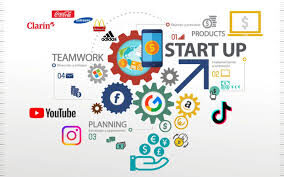The future of the food industry is being reshaped by technology, sustainability challenges, and changing consumer values. It’s moving toward smarter, cleaner, and more personalized systems of food production and consumption.
Here’s a breakdown of what the future looks like 👇
🌱 1. Sustainability and Climate Action
The food industry is a major contributor to greenhouse gas emissions and deforestation, so sustainability is becoming essential.
Trends:
- Regenerative agriculture — farming that restores soil health and biodiversity.
- Carbon-neutral food production — companies tracking and reducing emissions.
- Waste reduction — upcycling food waste and improving supply chains to cut losses.
- Local sourcing — reducing “food miles” and encouraging local food systems.
🤖 2. Technology and Automation
Digital transformation is revolutionizing how food is produced, processed, and delivered.
Examples:
- AI & data analytics — optimize crop yields, reduce waste, and predict demand.
- Robotics — automate harvesting, packaging, and even restaurant kitchens.
- Blockchain — improves transparency in food traceability and safety.
- Smart packaging — sensors that monitor freshness or temperature.
🧬 3. Biotechnology and Food Innovation
Biotech is creating entirely new types of food.
Developments:
- Lab-grown (cultured) meat — real meat made without animal slaughter.
- Plant-based alternatives — realistic substitutes for meat, dairy, and eggs.
- Precision fermentation — microbes used to produce proteins, fats, and flavors.
- Bioengineered crops — designed for drought resistance, nutrition, and yield.
🍽️ 4. Health and Personalization
Consumers are demanding healthier, more personalized diets.
Emerging trends:
- Personalized nutrition — AI-based diet plans based on genetics or microbiome data.
- Functional foods — products with added health benefits (e.g., probiotics, antioxidants).
- Clean-label movement — simpler, more natural ingredients.
🌍 5. Globalization and New Food Economies
Food will continue to be a global industry, but supply chains will become smarter and more resilient.
Changes include:
- Decentralized food systems — smaller, tech-enabled local producers.
- E-commerce and delivery platforms — faster, more efficient food access.
- Virtual restaurants & ghost kitchens — online-only food brands.
🔮 6. Ethical and Cultural Shifts
Future consumers care not only about taste and price but also about values.
- Animal welfare — rise of cruelty-free and vegan products.
- Fair trade — ethical sourcing and better worker conditions.
- Cultural fusion — globalization blending cuisines and flavors.
